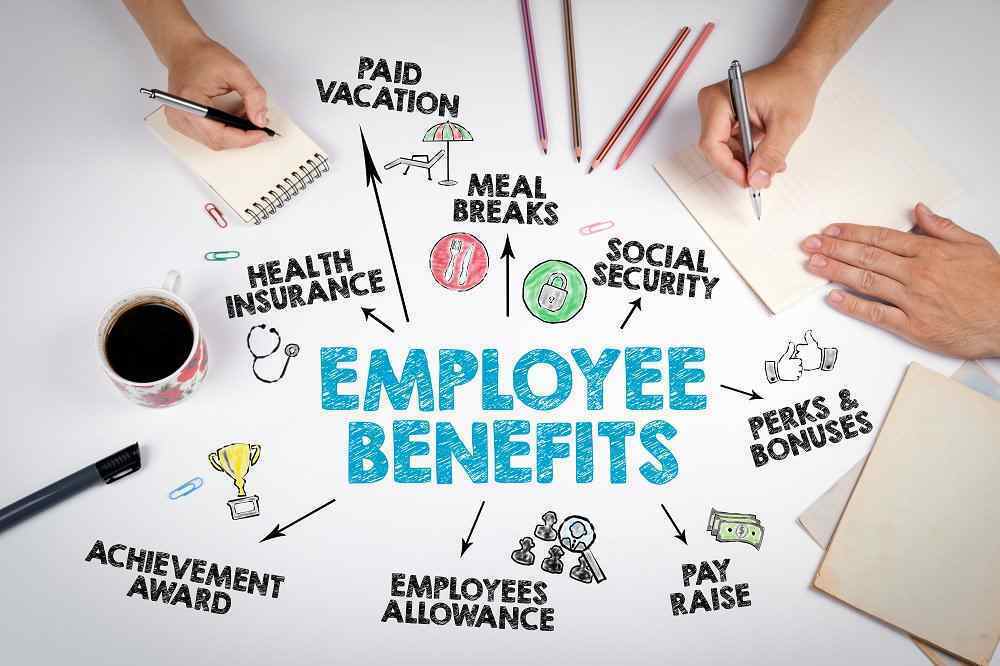In today’s competitive job market, offering attractive employee benefits has become essential for businesses looking to attract and retain top talent. A well-designed employee benefits program can not only help companies recruit the best employees, but also boost employee morale and productivity, reduce turnover, and ultimately, improve the bottom line. In this blog post, we will explore the key elements to design an employee benefits program that meets the needs of both employees and employers.
Contents
What Is An Employee Benefits Program?
An employee benefits program is a collection of non-wage compensations and benefits that are offered to employees by an employer in addition to their regular salary or wages. Employee benefits programs improve employee satisfaction, enhance work-life balance, and provide a safety net for employees in the event of unforeseen circumstances. It is important for companies to carefully consider the needs and preferences of their workforce when designing an employee benefits program in order to create a package that is both competitive and appealing.
How To Design An Employee Benefits Program?

Designing an employee benefits program can be a complex process that requires careful consideration of various factors. Here are some steps to follow when designing an employee benefits program:
Define Your Objectives
The first step is to clearly define your goals for offering employee benefits. For example, if your objective is to retain top talent, you may want to offer benefits that are attractive to employees in your industry. If your goal is to improve productivity, you may want to offer wellness programs to help employees maintain their health.
Analyze Your Workforce
It is important to understand the needs and preferences of your workforce. Analyzing your workforce can help you determine what benefits to offer. For example, if your workforce is primarily composed of young, single employees, you may want to offer benefits that are more flexible, such as a health savings account (HSA) that can be used for healthcare expenses.
Research And Choose Benefits
Once you have a good understanding of your workforce, research and choose benefits that are aligned with their needs and preferences. Consider benefits such as health insurance, retirement plans, paid time off, wellness programs, and professional development opportunities.
Consider Cost
It is important to consider the cost of the benefits you are offering. Determine how much you are willing to spend and how much your employees will contribute. You may want to work with an insurance broker or benefits consultant to help you understand the costs and options available.
Communicate With Employees
Communicating with employees about the benefits program is crucial. Make sure employees understand what benefits are available, how to enroll, and when they can expect to receive benefits. Also, provide educational materials to help them understand their benefits, such as a benefits guide or online resources.
Evaluate And Adjust
Finally, it is important to regularly evaluate the effectiveness of the benefits program. Survey employees to gather feedback and adjust the program as needed to ensure it remains competitive and meets the needs of your workforce. Keep in mind that the needs and preferences of your employees may change over time, so it is important to continuously monitor and adjust the benefits program accordingly.
Overall, it is important to design an employee benefits program that is not a one-size-fits-all approach. Companies need to tailor their programs to meet the specific needs and preferences of their workforce. Seeking the guidance of an experienced benefits consultant can also help ensure that your benefits program is designed effectively and efficiently.
What Are The Components Of The Employee Benefits Program?

An employee benefits program typically includes several components that can vary based on the industry, company size, and workforce demographics. Some of the most common components of an employee benefits program are:
- Health insurance: This includes medical, dental, vision, and prescription drug coverage. Employers may offer one or more of these types of coverage to employees, with varying levels of cost-sharing between the employer and employee.
- Retirement plans: Employers may offer retirement plans such as 401(k) plans, pension plans, and other types of retirement savings plans to help employees save for retirement. These plans may include employer contributions, matching contributions, or other incentives to encourage employees to save for retirement.
- Paid time off: This includes vacation days, sick leave, and holidays. Employers may offer a certain number of paid time off days per year and may have policies around accruing or rolling over unused time off.
- Life and disability insurance: Employers may offer life and disability insurance to employees, which provides financial protection in the event of an employee’s death or disability. These benefits can help support employees’ families and loved ones during difficult times.
- Flexible spending accounts (FSAs) and health savings accounts (HSAs): These accounts allow employees to set aside pre-tax dollars for qualified healthcare expenses. FSAs are typically used for expenses such as deductibles and copayments, while HSAs are used for high-deductible health plans and can be used for a wider range of healthcare expenses.
- Wellness programs: Employers may offer wellness programs to encourage employees to adopt healthy behaviors and lifestyles. These programs can include gym memberships, health screenings, nutrition counseling, and other wellness-related activities.
Above all, the specific benefits offered can have a significant impact on employee satisfaction, retention, and overall compensation. With all of these benefits, you can effectively design an employee benefits program.
Conclusion
In conclusion, employee benefits programs are a crucial component of a company’s human resources strategy. By offering attractive benefits packages, companies can attract and retain top talent, boost employee morale and productivity, reduce turnover, and comply with legal requirements. Designing an effective benefits program requires careful consideration of employee needs, budget constraints, and available benefits options. Ultimately, an effective employee benefits program can enhance a company’s reputation as an employer of choice and contribute to the success of the business.
Employee wellness programs are the key to improving employee motivation, productivity, and retention. At MantraCare, we have a team of health experts, counselors, and coaches who serve corporate employees with 10+ wellbeing programs including EAP, Employee Diabetes Reversal, Corporate MSK, Employee Fitness, Corporate Yoga, and Employee meditation.
